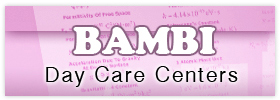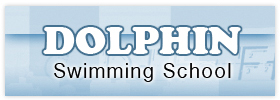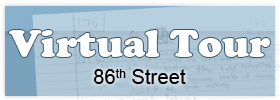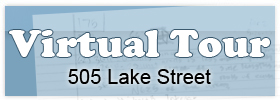As a department, we seek to provide an environment in which students can become mathematical problem solvers who are equipped to pursue challenging careers in our increasingly technological society. Math is an exciting and challenging experience at Big Apple Academy. In all classes students are involved in communication, reasoning, and problem-solving activities. Up-to-date technologies are used to enhance each student’s learning. The goal of the Mathematics Department is to help students become critical thinkers and effective problem solvers while they are mastering a certain body of mathematical knowledge.
Underlying this mission is the belief that the Department must make meaningful use of modern technologies as well as diverse methods of instruction to enhance teaching and learning and increase students’ understanding of mathematical concepts. The Mathematics Department is committed to a mathematics curriculum that is responsive to the needs of its students, and seeks to provide course offerings that present suitable academic challenge, in a supportive environment, based on the expectation that all students can learn mathematics. The mathematics giants of the past would be astonished by the changes the discipline has undergone in recent years. But the ingredients for the success are still the same: logic, creativity, and perseverance. Big Apple Academy’s students will develop these skills through a diverse range of courses: from early development of thinking skills, practical courses of Integrated Math to high level of Algebra and Geometry.
The study of mathematics in the Big Apple Academy schools is aimed at achieving the following goals:
I. In the General direction:
• formation of ideas about mathematics as a part of human culture, the importance of mathematics in the development of civilization and modern society;
• development of ideas about mathematics as a form of description and method of cognition of reality, creating conditions for the acquisition of the initial
experience of mathematical modeling;
• establishment of common methods of intellectual activity, characteristic of mathematics and is the foundation of cognitive culture, meaningful to the various spheres of human activity;
II. In the direction of Personal Development:
• develop logical and critical thinking, culture, language, mental ability to experiment;
• to offer students the intellectual honesty and objectivity, the ability to overcome the mental stereotypes stemming from everyday experience;
• education of personality traits that provide social mobility, the ability to make independent decisions;
• formation of the qualities thought necessary foradaptation to the modern information society;
• development of interest to mathematical creativity and mathematical skills;
III. In the Subject direction:
• mastery of mathematical knowledge and skills necessary to continue their studies in the other high school, college, or other educational institutions,the study of related disciplines, applications in everyday life;
• creating a foundation for mathematical development, the formation mechanisms of thinking characteristic of mathematical activity.
Requirements for learning outcomes and development of course content:
The study of mathematics in our school enables students to achieve the following development outcomes:
I. In the General direction:
1. initial presentation of ideas and methods of mathematics as the universal language of science and technology, a means of modeling the phenomena and processes;
2. ability to see the math problem in the context of problem situations in other disciplines in the life around them;
3. ability to find various sources of information needed to solve mathematical problems, and represents it in an understandable form, make decisions with incomplete and redundant, accurate, and probabilistic information;
4. ability to understand and use mathematical tools visualization (graphs, charts, tables, charts, etc.) for illustration, interpretation, argument;
5. the ability to infer the solution of educational problems and understand the necessity of checking them;
6. the ability to apply inductive and deductive reasoning, see the different strategiesfor solving problems;
7. understanding the essence of algorithmic requirements and the ability to act in accordance with the proposed algorithm;
8. ability to independently set goals, select and create algorithms for solving mathematical problems of education;
9. the ability to plan and implement activities aimed at addressing problems of research character;
II. In the Personal direction:
1. the ability to clearly, accurately, competently express their thoughts orally and in writing; to understand the meaning of problems; to build arguments, to give examples and counterexamples;
2. critical thinking, the ability to recognize logically incorrect statements, distinguish conjecture from fact;
3. the representation of mathematical science as the sphere of human activity, the stages of its development, its significance for the development of civilization;
4. creative thinking, initiative, resourcefulness, activity in solving mathematical problems;
5. ability to control the process and outcome of mathematical learning activities;
6. capacity for emotional perception of mathematical objects, tasks, decisions, reasoning;
III. In the Subject area:
1. mastery of the basic concepts of the main sections of content; presentation of the basic concepts being studied (the number, geometric figure, equation, function, probability) as the most important mathematical model to describe and study the real processes and phenomena;
2. ability to work with mathematical text (to analyze, extract the necessary information), accurately and intelligently to express his thoughts orally and in writing with the use of mathematical terminology and symbols, use the various languages of mathematics, classification, rationale, prove mathematical statements;
3. development of concepts of number and number systems from the natural to the real numbers, the mastery of skills in oral, written, instrumental calculations;
4. acquisition of symbolic language of algebra techniques perform identical transformations, rational expressions, solving equations, systems of equations, inequalities and systems of inequalities, the ability to use the idea of coordinates on the plane for the interpretation of equations, inequalities, systems, ability to use algebraic manipulations, the device equations and inequalities to solve problems from different sections of the course;
5. acquisition system of functional concepts, functional language and symbolism, the ability to use functional graphical representations to describe and analyze real-world relationships;
6. mastery of the basic method of presenting and analyzing statistical data, the presence of ideas about the statistical regularities in the real world and about different ways of learning about stochastic models;
7. the mastery of geometric language, the ability to use it to describe things of the world, the development of spatial concepts and visual skills, skills of geometric constructions;
8. acquisition of systematic knowledge of plane figures and their properties, as well as visual level – about the elementary space bodies, ability to apply systematic knowledge about them to deal with geometric and practical problems;
9. the ability to measure lengths, angles, using formulas for finding perimeter, area and volume of geometric figures;
10. ability to apply learned concepts, results, methods for solving problems of a practical nature and objectives of related disciplines with the need for reference materials, calculator, computer.










